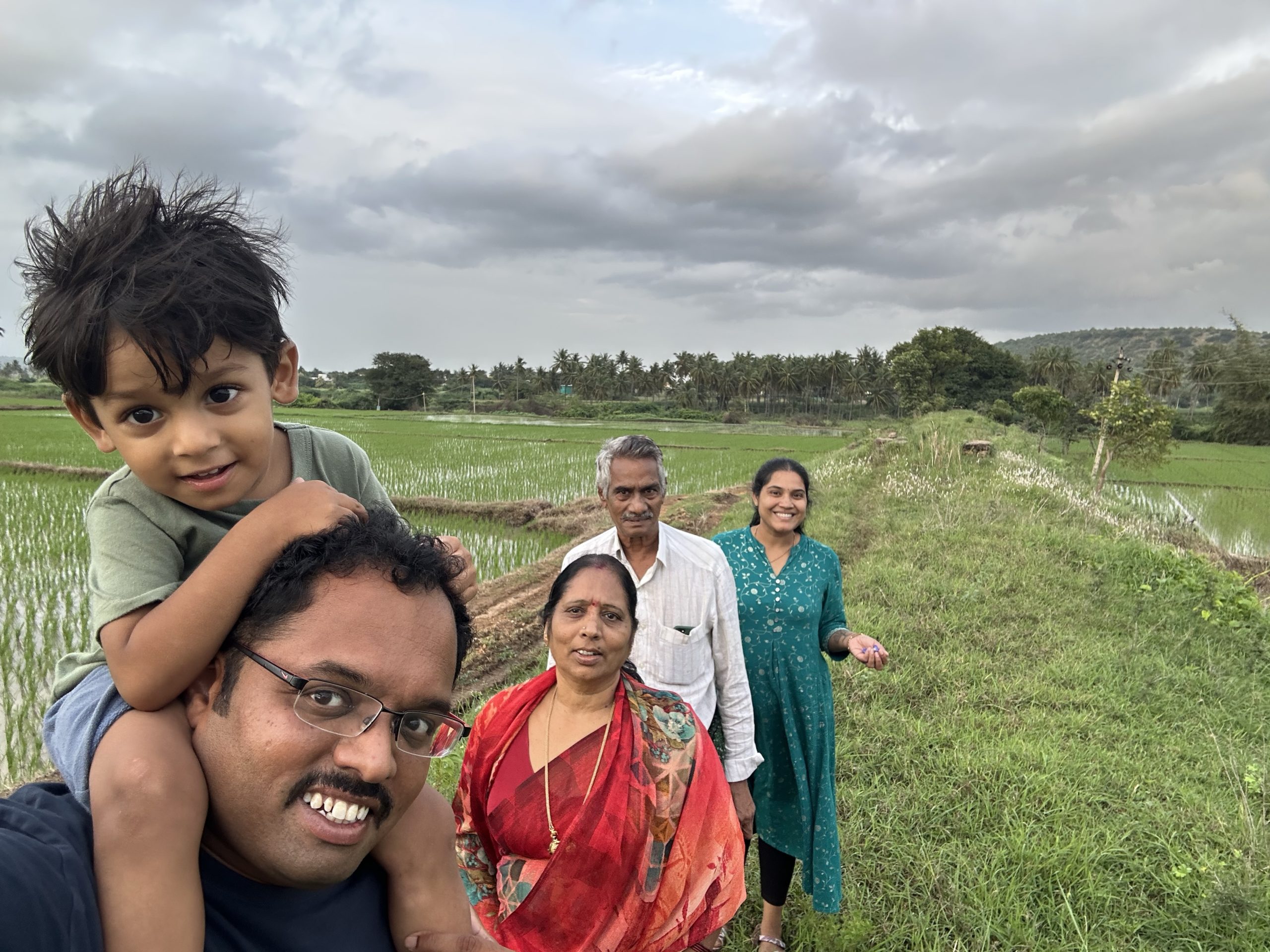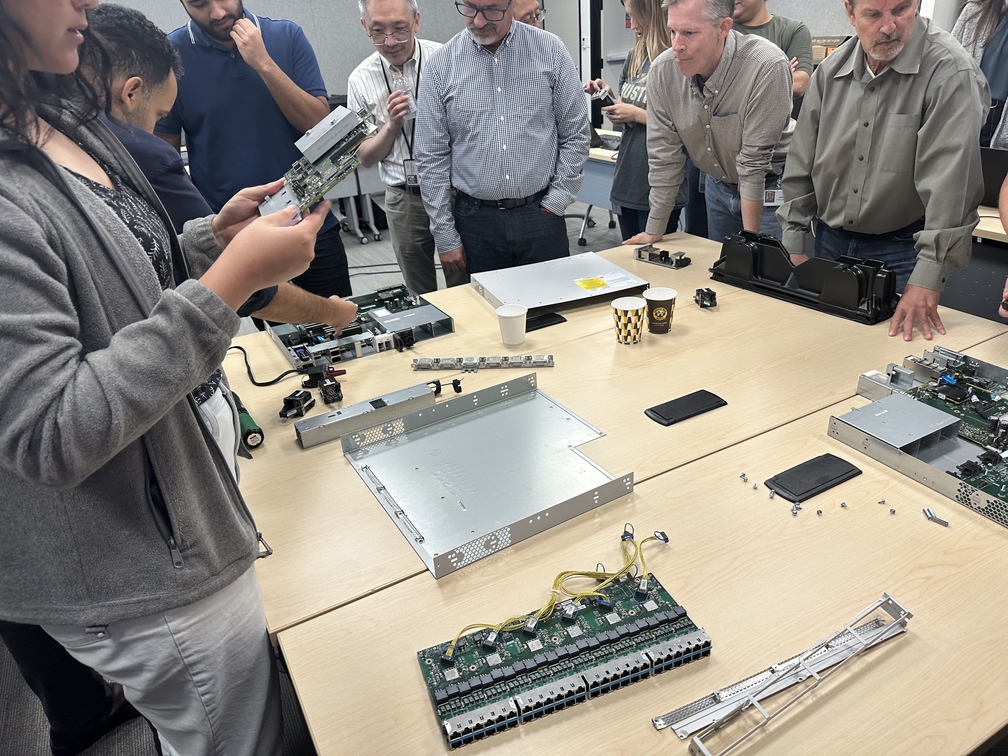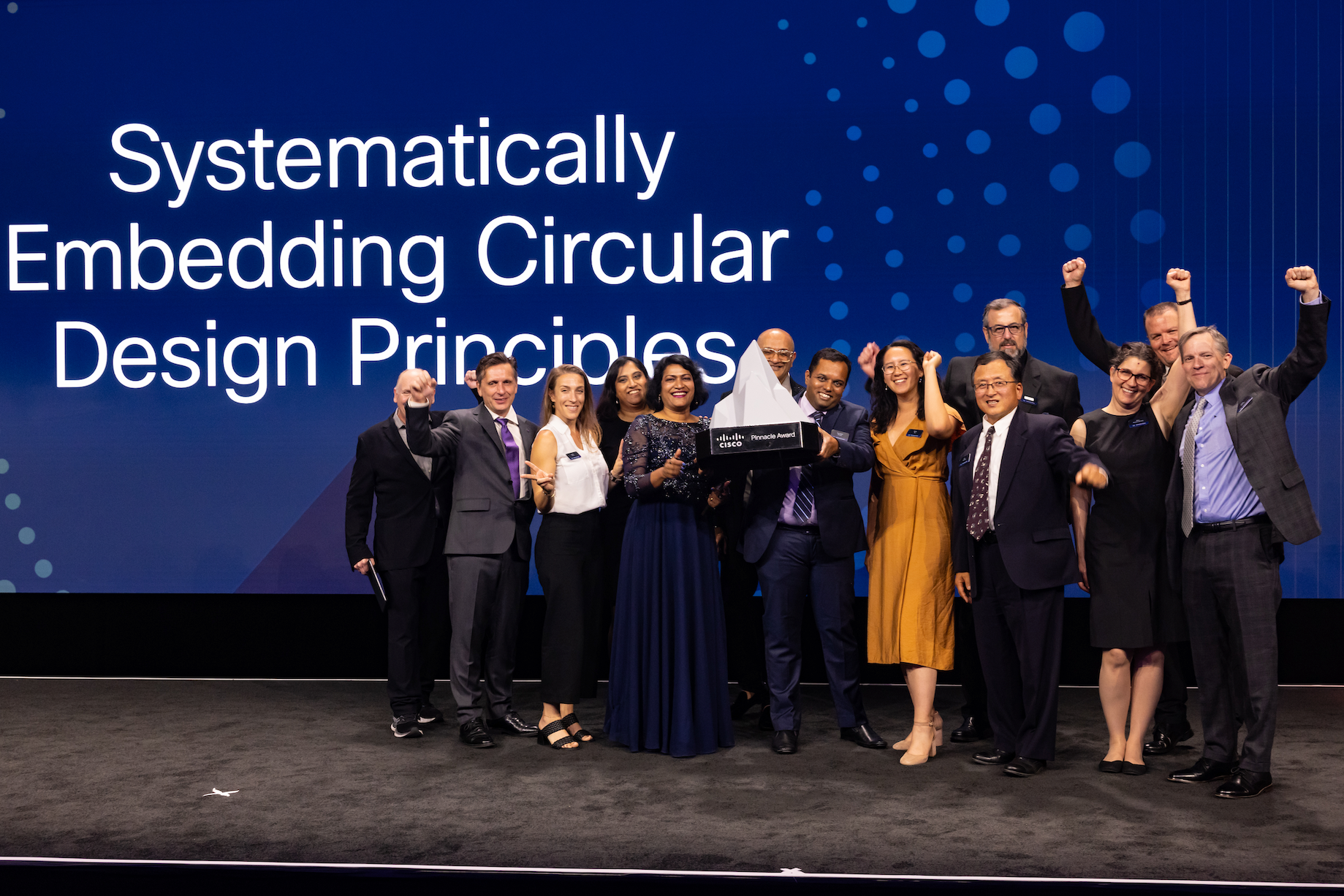This weblog is a part of our deal with Cisco workers who’re “Striving for Sustainability” by discovering alternatives to combine sustainability of their day-to-day work.

Over the previous a number of years, we now have constructed an engine to obtain our aim to include Round Design Ideas into 100% of our new merchandise and packaging by fiscal 2025.
One of many key drivers behind this effort is Ajay Ranjith Vempati, Round Design Lead at Cisco. Ajay’s first classes in circularity got here whereas rising up on his mother or father’s farm in India, the place nothing went to waste; crop residues turned animal fodder, manure enriched the soil, and meals scraps returned to fields. His mom carried the identical spirit into each day life: worn-out garments lived many lives as comforters, dusting rags, or doormats whereas milk pouches, newspapers, and books had been fastidiously saved for recyclers.
These experiences formed his perception that nothing is ever a waste — solely a useful resource in transition. At present, he brings these learnings into his work, embedding circularity into Cisco’s product design. Study extra about Ajay’s journey at Cisco:
How did Cisco’s round design journey start and what impressed it?
Ajay: Cisco engineers have been embedding sustainability into merchandise and packaging for over a decade. The Round Design program picked up momentum a couple of years earlier than I joined. Throughout that point, Cisco introduced some formidable round design objectives, the groups performed product teardowns to grasp the most important alternative areas, and a bunch of inner champions helped to create Cisco’s Round Design Ideas and a gamified coaching program.
After I joined Cisco in 2021, my position was to behave as a catalyst: carry individuals collectively, simplify and scale the strategy, and provides engineers instruments to make it their very own. We developed a design scoring mechanism and embedded it into the instruments that Cisco engineers use every single day. Then we skilled over 7,000 engineers. This could not have been doable with out the superb partnerships we now have with leaders and workforce members throughout Cisco’s {hardware} engineering and provide chain groups.
What had been some challenges confronted throughout this journey, and the way had been they overcome?
Ajay: One among our greatest challenges was determining learn how to scale this course of throughout an organization with such various merchandise. With lots of of merchandise launched every year, it shortly turned clear that evaluating every product and packaging design manually simply wasn’t possible. That’s once we began to develop IT instruments that might embed the round design analysis instantly into our design course of. By integrating these necessities into instruments our engineering and provide chain groups already use, groups might extra simply undertake circularity with out stepping exterior their regular workflow.
Management was extremely supportive; they’re now accountable for round design identical to they’re accountable for value and high quality metrics, and new designs can’t be launched to manufacturing till they meet round design standards.
Alongside the technical answer, we additionally targeted on socialization — ensuring everybody understood what was altering and why. We participated in all-hands and workforce conferences and relied on champions inside every enterprise unit to drive adoption. In the end, it was this mixture of strong instruments, management assist, and engagement that helped us to scale this system efficiently.
I perceive the engineering groups have embraced round design. Are you able to share an instance of a novel innovation they developed?


Ajay: Sure – one instance traces again to a product teardown we hosted. Whereas disassembling a swap, the workforce realized that the performance of the metal enclosure could possibly be maintained even with lowered thickness. This led Cisco to revamp the enclosure of the C9350 sensible swap, leading to materials financial savings and improved effectivity with out compromising efficiency. By utilizing much less metal, we scale back sourcing and transport prices, whereas additionally avoiding the related greenhouse gasoline (GHG) emissions from the manufacturing and transportation of that materials.
To me, this can be a nice instance of innovation and cross-team collaboration. The engineers went past their typical scope, engaged with advertising and prospects, and bought everybody on board utilizing one thing a little bit completely different — with out impacting the shopper expertise. It actually challenged the mindset of “that is how we’ve all the time performed it.”
We’re experiencing comparable shifts in packaging. Foam was once the usual method to shield our merchandise, however now we’re seeing packaging designs that get rid of foam and plastic. Persons are pushing previous standard fascinated by what’s doable from a design perspective. It’s not simple — there are many stakeholders to have interaction — however groups are breaking out of their silos to make modifications, and that’s been actually impactful.
How do you see Cisco’s round design efforts benefiting prospects and the broader business?
Ajay: We all know that prospects are more and more searching for merchandise which have decrease environmental footprints and lowered vitality and upkeep prices. Lots of our prospects — particularly in Europe and amongst Fortune 500 corporations — have their very own sustainability objectives, they usually’re in search of merchandise that assist them meet these requirements.
Our strategy to round design instantly helps these wants. For our prospects, it means merchandise that use fewer assets, last more, value much less to function, are simple to restore or improve, and may be recycled successfully.
On a broader business degree, what’s distinctive about our strategy is the way it’s deeply embedded in the way in which we design our merchandise and packaging. This isn’t only a pilot or a distinct segment initiative. Round design is now constructed into the event of each new product and packaging at Cisco. We’ve created a mannequin that reveals how design itself could be a catalyst for delivering on sustainability and enterprise objectives at scale — not only for us, however for the complete business.
What’s subsequent for round design?


Ajay: We’re actively increasing and revising our standards by listening to our stakeholders, together with our prospects, workers, regulators, and buyers. We’re updating our Round Design Ideas to ensure we’re prepared for the long run. We goal to maneuver the needle on subjects like utilizing recycled metals, eradicating hazardous supplies, and making our analysis standards extra product-specific — as a result of Cisco’s product variety means there’s no one-size-fits-all strategy.
We’re additionally elevating the bar for our engineering and design groups. Our preliminary coaching was an amazing basis, however now we’re creating superior, role-specific coaching with real-life examples and sensible instruments that engineers can use of their day-to-day work to include circularity. It’s about shifting past simply telling groups to make use of recycled supplies.We’re exhibiting them how, and what to contemplate within the course of.
I’m genuinely enthusiastic about the place we’re headed. The subsequent part will likely be rigorous and require important effort, however it can even be rewarding. Round design isn’t nearly doing good for the setting. By utilizing recycled supplies and designing merchandise that last more and are simpler to restore and recycle, we’re making ready to be extra future-ready and resilient from a provide chain perspective, whereas assembly the evolving expectations of stakeholders. In some ways, that is turning into a real enterprise crucial, not only a sustainability aim.

